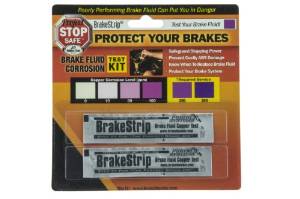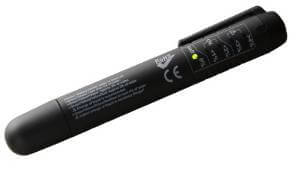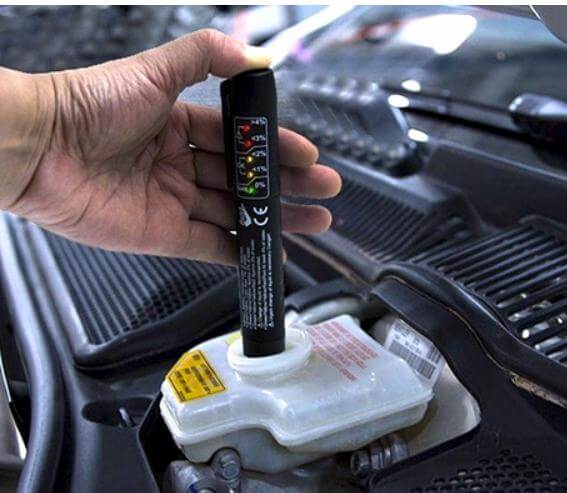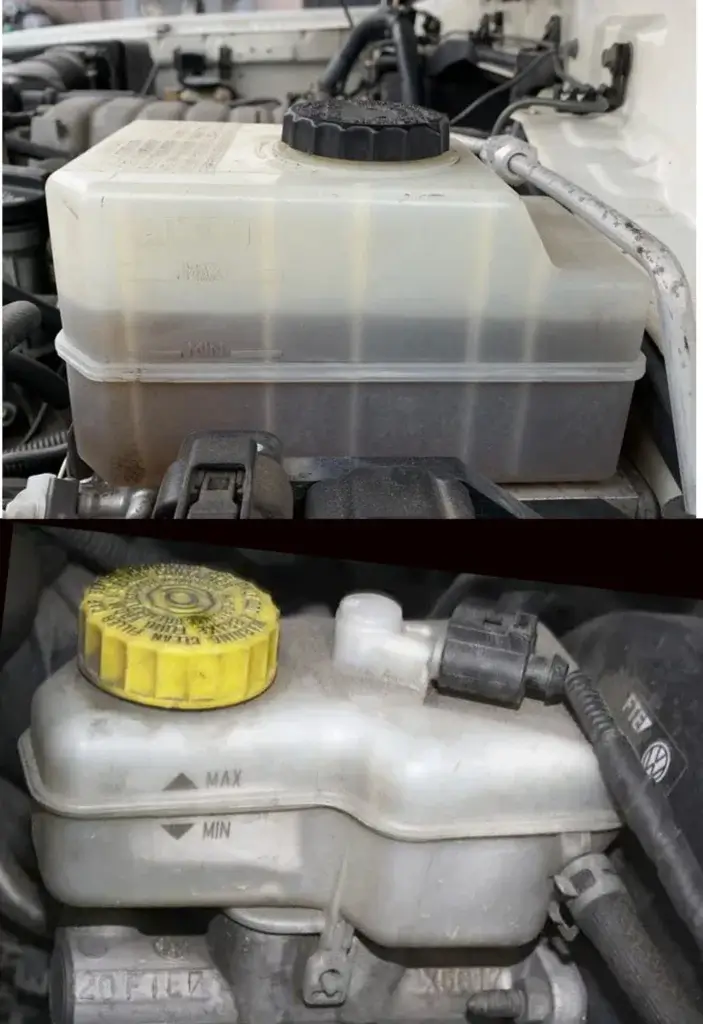Brake fluid color and brake fluid testing
Brake fluid color and brake fluid testing
No matter what you read online or see in shops, Brake fluid color is not an indication of brake fluid condition
Brake fluid color, by itself, doesn’t tell you if the fluid is bad. You have to test it
You’ll see all kinds of color charts on the Internet that show brown fluid as needing replacement. There are NO laboratory tests to confirm that color has anything to do with brake fluid condition. NONE!
Color alone is not an indication of brake fluid condition. The color charts are used to sell unnecessary brake fluid flushes.
In fact, you can change the brake fluid on a vehicle and it can turn brown within weeks after changing. Brake fluid color can change due to the types of seals, assembly lube and rubber used in the system.
However, if you see debris in the brake fluid, that’s an indication of rubber component (seals and hoses) breakdown and the fluid should be changed and a full brake inspection completed.
Don’t let a shop convince you to get a brake fluid flush based solely on a brown or dark brown color of the fluid. Insist that they test it yourself with the items below.
Read this quote from automotive trainer Andrew Markel from Brake and Front End Magazine
“Visual inspection of the fluid can be extremely misleading. The color of brake fluid can vary from clear to shades of blue. Even if the brake fluid is discolored or cloudy, it might still meet the system’s performance requirements. The brake fluid in the master cylinder reservoir can have a far different appearance than the fluid contained in the calipers. But, if you can see debris in the fluid with your naked eye, it could be a sign that rubber in seals or hoses are starting to degrade. Or, it could be the customer left the cap off the reservoir.” — Andrew Markel Brake and Front End Magazine Oct 7, 2020
Brake fluid testing
The base ingredient in brake fluid never actually wears out. But the anti-corrosion additives in brake fluid do degrade over time and with the accumulation of moisture. That’s why brake fluid must be changed at periodic intervals.
Some carmakers recommend changing brake fluid every 2-years or every 24,000 miles, whichever comes first. Yet other carmakers don’t list any brake fluid change intervals.
Brake fluid testing for copper

Buy a package of brake fluid test strips and test your brake fluid so you don’t get scammed.
The presence of copper is a good indicator of the condition of brake fluid condition. As the anti-corrosion additives in brake fluid deteriorate, copper leaches into the brake fluid from the brazed tubing seam. The high copper content in brake fluid is an indication that the fluid has lost its anti-corrosion effectiveness.
To avoid further system breakdown, brake fluid should be changed when the copper content is 200ppm (parts per million) or more.
Green color is an indication of high copper content.
You can do this test copper content yourself. Simply dip the brake test strip in the brake fluid reservoir, waits for 30-secs. and compares the strip color to a chart on the container.
Brake fluid testing for pH
Brake fluid contains buffering additives to prevent corrosion. When the buffers wear out, the brake fluid becomes acidic and can damage internal components. A pH test strip can tell you whether the brake fluid has turned acidic.
Brake fluid testing for mositure
Test the brake fluid’s moisture content with a battery-operated tester

Battery powered brake fluid moisture tester
or a refractometer. If the fluid’s moisture content exceeds 2%, you should agree to a brake fluid flush.
Even if your maintenance manual recommends a periodic brake fluid flush based on time or mileage, it’s not a bad idea to have it tested before agreeing to the service. If the fluid hasn’t accumulated moisture and the copper content is low, you can extend the change intervals.
Check brake fluid level
Locate the master cylinder brake fluid reservoir on the driver’s side of the vehicle at the rear of the engine compartment. Most reservoirs made within the last 50 years are made from translucent plastic. You should be able to see the fluid level through the plastic. If the reservoir is dirty, wipe it with a rag.
Look for the MIN and MAX markings on the plastic reservoir. If the fluid level is below the MIN marking, add more fluid. But make sure you use the correct type of fluid. It should be listed on the cap of the reservoir. If not, look in your owner’s manual.
©, 2021 Rick Muscoplat
Posted on by Rick Muscoplat

